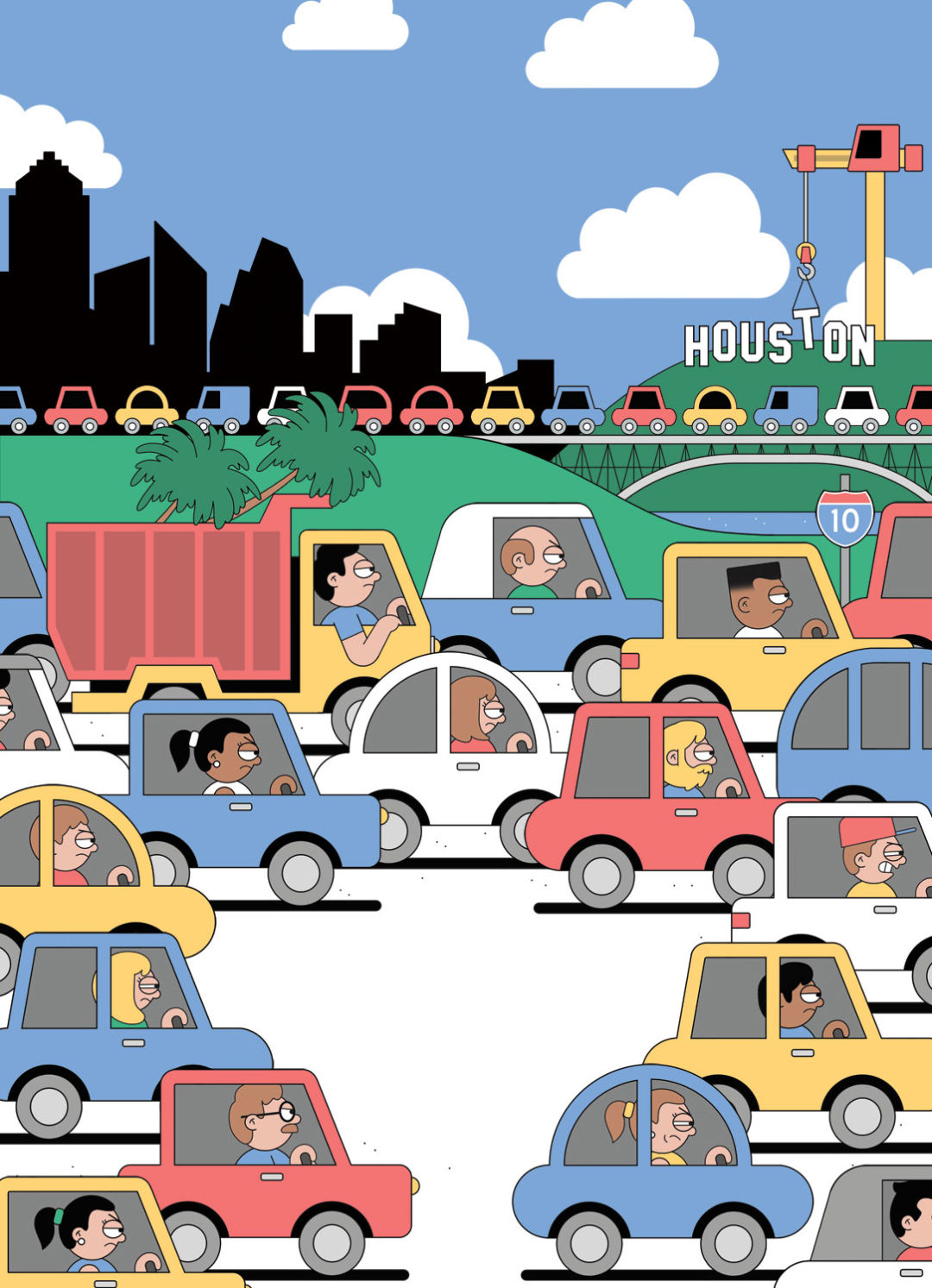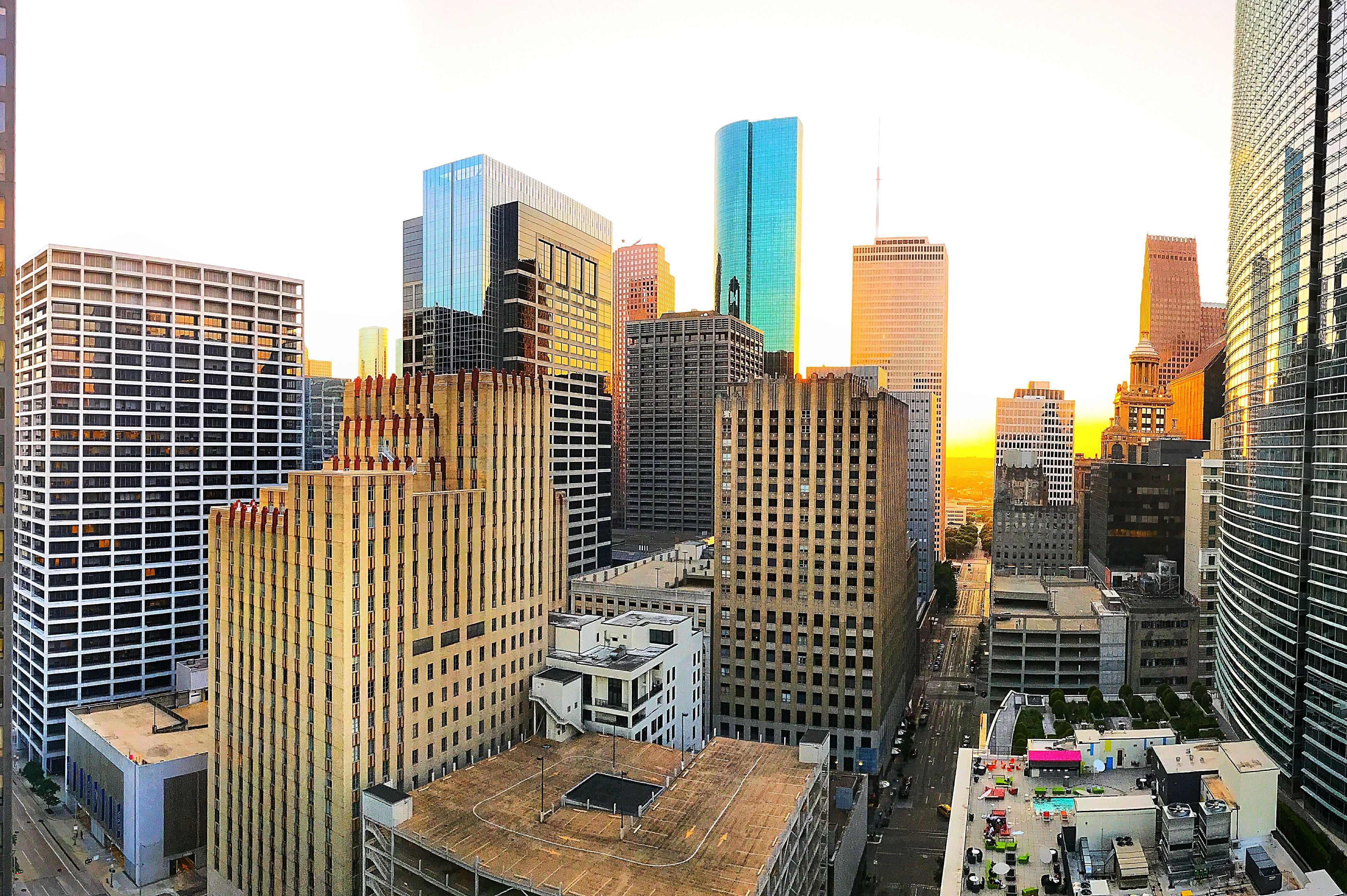Houston and L.A.: More Alike Every Day?

Image: Dan Woodger
T. Sean Shannon is a laidback guy. As a writer for SNL for nearly a decade, from 1997 to 2006, and later as a director and producer, he has navigated Hollywood with an effortless, unfettered chill worthy of the Dude in The Big Lebowski. But on a crisp, sunny Wednesday, at the juncture of 59 and 610, the Emmy winner is about to jump out of his skin.
Originally from Pasadena (Texas, not California), Shannon lived in Los Angeles for 25 years before relocating to Sugar Land last October. As a once-local Newstonian, he’s been enjoying the spoils of cheaper real estate, gas, coffee and, well, everything. But after five months here, reality is setting in: Traffic in Houston, always heavy, is worse than ever, and it reminds him of his old home.
“Dude,” Shannon says grimly. “In L.A., you have a four-hour window from 10 a.m. to 2 p.m. to drive anywhere. After that, you’re screwed.” He likens the nightmare of post-2 p.m. L.A. traffic to that of Will Smith’s daily hell in the zombie flick I Am Legend: “It’s just like that movie, man! If you don’t get home before dark, you get shredded to pieces. If you’re in the car after 2 p.m., you’re freaking! You look at the clock and go, ‘Oh no, I’m doomed! I gotta call my wife and tell her I love her!’ And it’s just like that here, now.”
We tell Shannon that the L.A.-ification of Houston is something we’ve been hearing a lot about lately, particularly from those born and raised here. With the influx of new Houston residents in the past few years and the attendant onslaught of development, some think the city’s character is changing.
Shannon, warming to the subject, agrees. Certainly, the Bayou City’s famously easy living isn’t quite as easy as before. As in the California city, wherever you’re going, you better allow 30 minutes minimum to get there, and travel routes—especially freeways and secret back ways—are popular subjects of conversation. Perhaps related (and by no means a bad thing): Mirroring L.A., Houston is becoming more of a neighborhood city, where people stick to their areas of town in the evenings.
Shannon’s been happy, he says, to move back here and observe improvements to Houston’s outdoor life: new greenspace and outdoor dining options, the latter of which particularly reminds him of his previous home. The new River Oaks District, he says, is like a mini-Rodeo Drive. And “everyone’s traveling around with their dogs, just like L.A.,” he notes. “The good thing is they’re still Texas-sized dogs; in L.A., they’re purse-sized dogs.”
There are things Shannon misses about the old Houston, of course. He mourns the Laff Stop on West Gray, where he hung out with Houston icon Bill Hicks and hosted an annual Christmas comedy show with his brother Charlie, who has since passed away (it’s now the site of upscale bar Local Pour). And the people, he says, are a few degrees less friendly than he remembers—a bit more like Angelenos, who, by the way, account for more than 25,000 of our recent transplants, according to the U.S. Census Bureau's American Community Survey.
Of course, the two cities have always had a lot in common. Bill Fulton, director of Rice University’s Kinder Institute for Urban Research, is not only a celebrated city planner but also the former mayor of Ventura, California, just outside L.A. “I see these cities as almost identical in the way they function,” he says. “Big, sprawling, both on a grid. And of course our traffic is more L.A.-like every day.” There are cultural parallels as well. “In L.A. you go to the hottest new restaurant and it’s in a mini-mall next to a tattoo shop,” says Fulton. “That’s not how it works in New York City, but that’s how it works in L.A., and that’s how it works here.”
Author Joel Kotkin, who writes about demographic, social and economic trends, travels from Southern California to Houston often. Houston comes up quite a lot in his new book, The Human City: Urbanism for the Rest of Us; in fact, one chapter opens with Katy subdivision Cinco Ranch. His description of Los Angeles in the ’80s could be Houston’s current bio: “L.A. was once an opportunity city,” he explains. “It had three of the top 10 oil companies. Downtown was being heavily constructed, there was aggressive development. It was a great, open city. And there was this can-do attitude.”
Kotkin—who has plenty of detractors, thanks to his essentially pro-sprawl viewpoint—believes Houstonians should consider L.A. to be a cautionary tale. “L.A. was once a very open society,” he says. “You could make friends easily, people were happy to be there, and there was an optimistic, ‘L.A. way’ of doing things. But then we decided we weren’t going to fix the roads. We encouraged density, and that created sprawl and congestion. And ultimately, we lost the openness and mobility that was quintessential Los Angeles, and a lot of our character.”
As the Kinder Institute’s founding director, and as an academic who has studied Houston for 35 years, Stephen Klineberg says that L.A. is Houston’s “big brother in terms of urban form.” He’s in agreement with Shannon that our terrible traffic, as in Los Angeles, is the “new normal.” One way we surpass our big brother, he adds, is with our ethnic diversity. “The racial tensions are far more palpable in L.A.,” he says. But Klineberg also warns of Houston’s “rigid class division” as a serious challenge. “That’s where we can learn from L.A.,” he says. “Let’s work on our divisions. Houston has a can-do spirit, so let’s not lose that as we grow.”
For now, with the price of oil at a record low, the pace of growth here is finally slowing down. But Shannon, whose road rage has turned to resignation as we continue to sit in serpentine traffic, thinks Houston is still plenty attractive to the rest of the country—particularly his former SoCal neighbors. “Dude, trust me, they’re coming,” he says. He takes on the persona of an aloof L.A. invader: “You’ve had it too good for too long, people,” he declares. “We’re here to take your women. And your humidity.”




